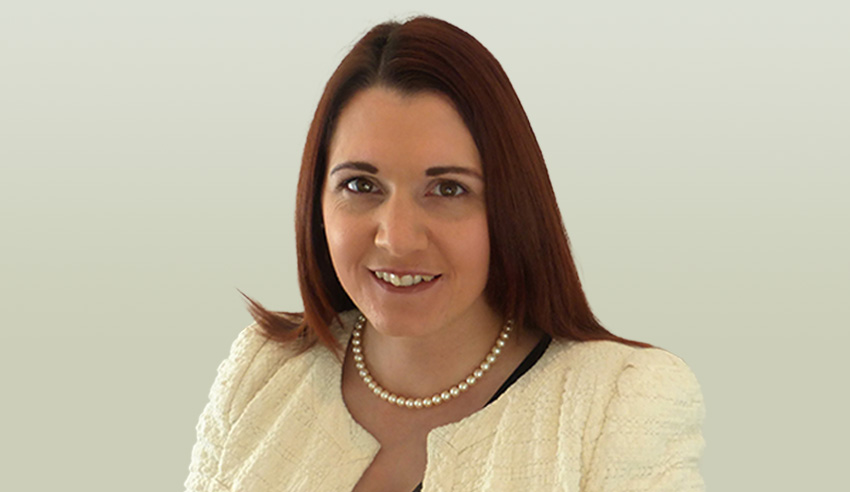Firms should be “integrating technology now” for a more streamlined and easy return to the office post-pandemic, according to this tech executive.

Lindsay O’Connor is the head of online solutions at LexisNexis, a global provider of legal, government and corporate tech-focused solutions. Speaking on the Lawyers Weekly Show, in an episode in partnership with LexisNexis, she explained what some of the main pain points and challenges of legal drafting have been since the onset of the pandemic – and how lawyers can successfully navigate drafting and tech moving forward.
“Certainly, as lawyers have transitioned to working from home, that’s definitely exacerbated some of these issues. I think some of the key ones that spring to mind for me are certainly around version control. So often, when you are preparing a legal document, there can be many different versions of that passed around between different solicitors, whether it’s going to a legal assistant, a paralegal or off to a secretary for checking as well. And so, keeping on track of what the latest version is, is really important when you bear in mind where a lawyer might be getting that document from in the first place,” she said.
“When lawyers were in an office situation, a lot of this review work, proofreading work was actually done in person. [But] suddenly you had everybody moving to an environment where they were having to collaborate digitally and online. And I think we just found that there were different levels of competency and comfort with that.
“So, I think what we’ve seen is that the last 18 months just really brought to the forefront what some of those issues are. And we now have the full spectrum of people who are actually excelling, thriving and are more efficient than ever. And some people who are potentially still a little behind in terms of adopting that technology.”
People who are struggling with these challenges also exist in every aspect of the profession – from graduate lawyers to those at the partner level.
“We’ve got some people who definitely are really struggling with transitioning to working in this way. And to be honest, they’re probably a little bit reluctant to talk about that. There’s an element of not wanting to necessarily reach out for help. They just feel like they should be able to deal with something that they haven’t been trained to do,” Ms O’Connor explained.
“Then at the opposite end of the spectrum, we have some firms who have really just thrown themselves into and almost have the opposite problem. They felt that technology could solve all their issues and started to adopt a large number of different programs and tools. And they’ve almost had system overload for their users. People now aren’t sure what they’re meant to be using when. And you have people within a firm at various levels of expertise and experience with how to use those things. So, I think what’s surprising is that we absolutely can’t treat the profession as a whole in this area.”
In terms of firms not “overloading” their staff with tech, Ms O’Connor said it was important to find a balance between innovation and simplicity.
“We were thrown into this situation last year where everybody had to work from home, probably a little bit before the legal profession was ready for that way of working. And so, people being innovative as most lawyers are, they tried to look at what was available to solve this problem. And one of those solutions is tech. And there’s a huge number of tools out there,” she said.
“So, we found lots of firms adapting things like Slack. They were utilising Teams, but they were also utilising Zoom. And what you then find is users actually aren’t sure what tool they’re meant to be using, at what stage. They’ve got a chat going on in Slack and another chat going on in Teams. They’re getting calls from Teams, calls via Zoom. And it’s actually just wasting a lot of their time jumping between all of these different programs.
Moving forward, firms need to be able to integrate this technology to create a more streamlined working model – something which Ms O’Connor stressed was “urgent” in a post-pandemic market.
“We’re reaching a point in the pandemic which is going to be even more tricky for firms to manage. When everybody had to work from home, everybody was in the same boat. Everybody at home is experiencing similar issues. What we’re going to find now is people slowly returning to the office. And I think that it’s clear to see not just within the legal profession, but within other professions that not everybody is going to return to the office. And not everybody’s going to return to the office on a regular basis as prior to the pandemic,” she said.
“So, what we’re going to have now is different groups of users. You’re going to have people who are there present within a firm face-to-face, dealing with one another. And then they’re going to also be working with people who are working entirely remotely. So that’s going to create a two-tier system for firms to deal with. So, integrating technology now, before firms start to encounter that issue is going to be a really good idea.”
The transcript of this podcast episode was slightly edited for publishing purposes. To listen to the full conversation with Lindsay O’Connor, click below:

Lauren is the commercial content writer within Momentum Media’s professional services suite, including Lawyers Weekly, Accountants Daily and HR Leader, focusing primarily on commercial and client content, features and ebooks. Prior to joining Lawyers Weekly, she worked as a trade journalist for media and travel industry publications. Born in England, Lauren enjoys trying new bars and restaurants, attending music festivals and travelling.